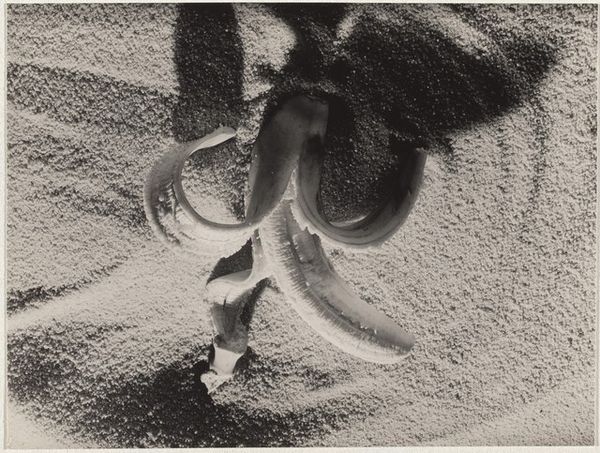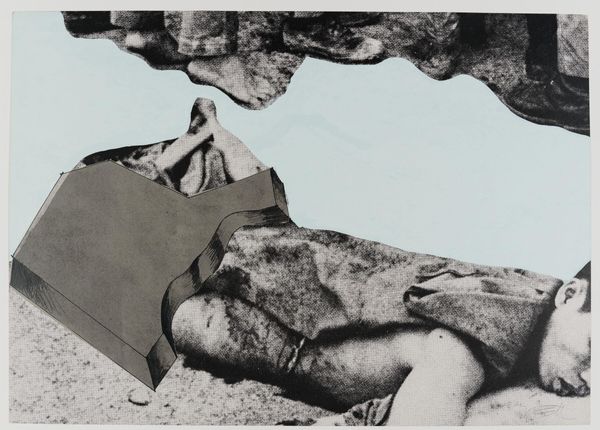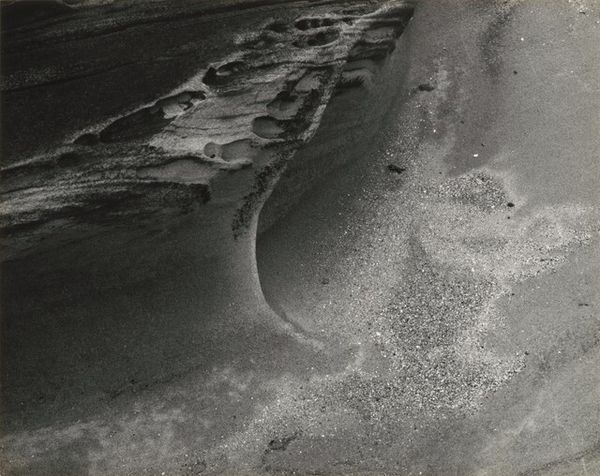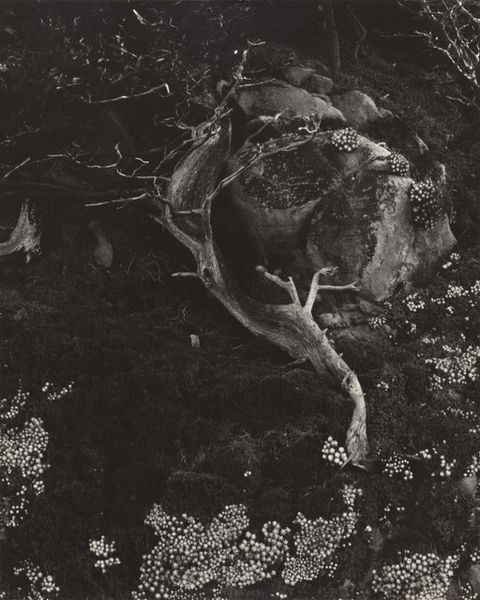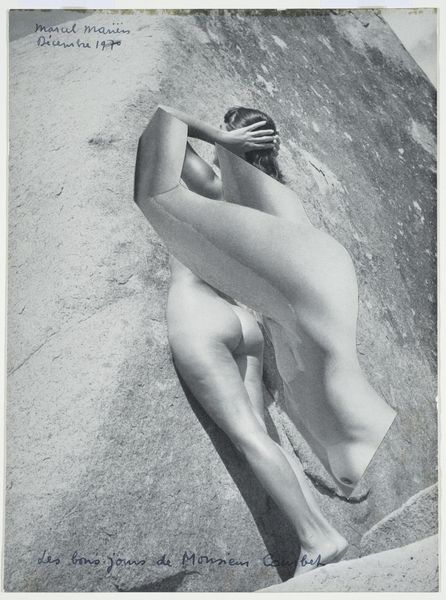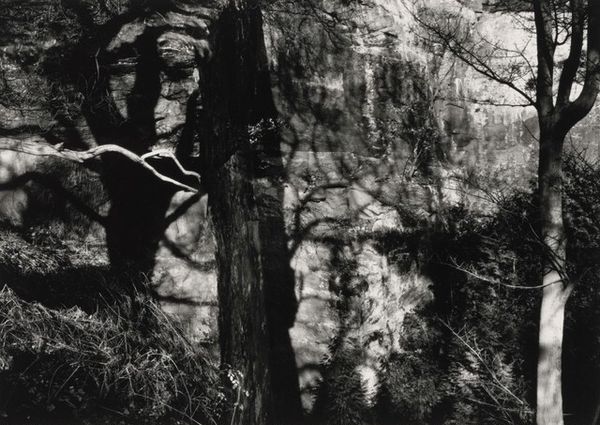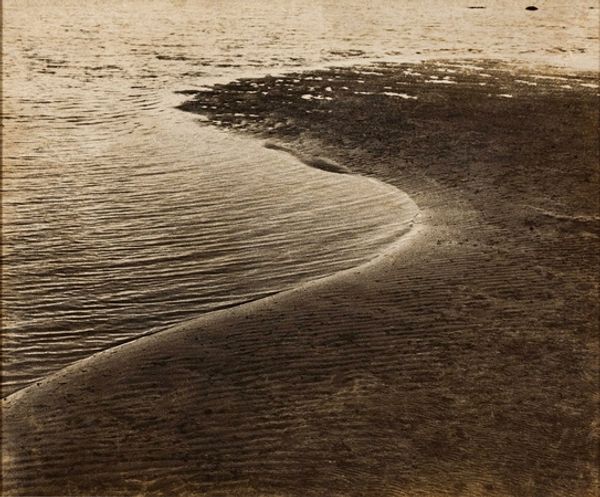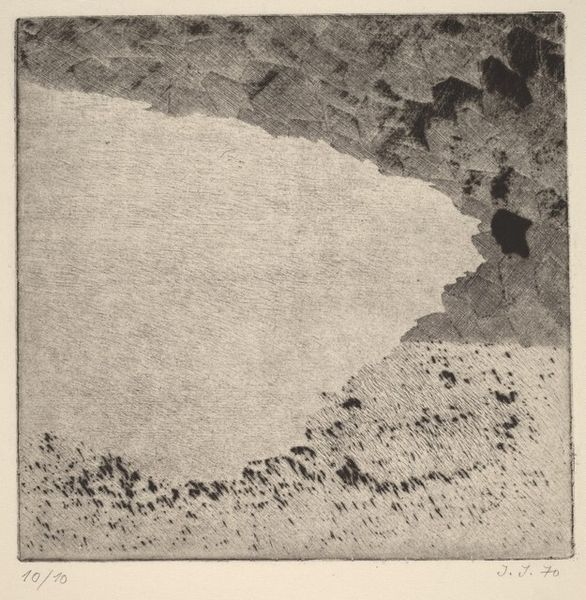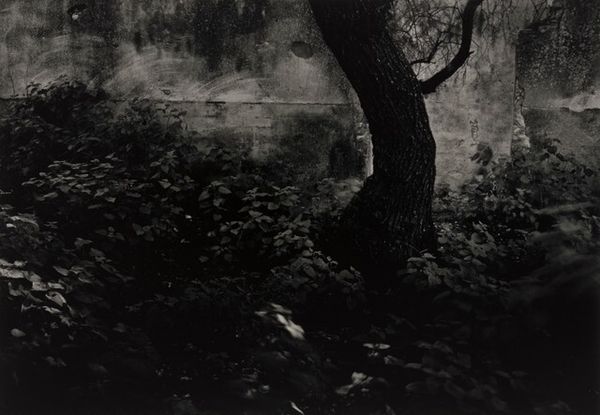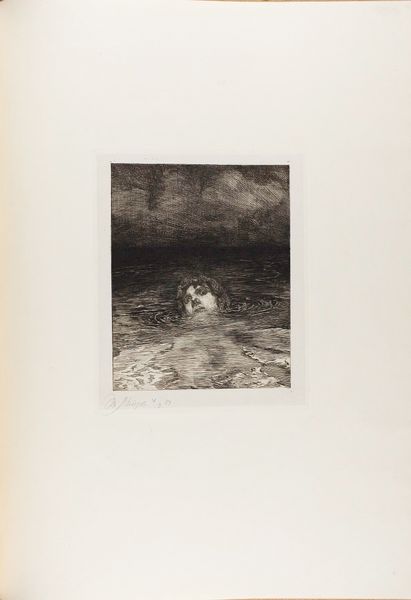
photography, gelatin-silver-print
#
conceptual-art
#
landscape
#
photography
#
gelatin-silver-print
#
monochrome photography
#
monochrome
#
nude
#
monochrome
Dimensions: image: 29.3 x 28.9 cm (11 9/16 x 11 3/8 in.) sheet: 29.8 x 29.5 cm (11 3/4 x 11 5/8 in.)
Copyright: National Gallery of Art: CC0 1.0
Curator: Dieter Appelt’s 1980 gelatin silver print, "Die Quelle (The Spring)," captures a unique interplay between the human form and the natural world. Editor: It's a striking image! I am immediately struck by the starkness, the way the rough, unforgiving stone frames this incredibly vulnerable, flowing figure. It’s like a baptism, or maybe a sacrifice. Curator: I think "baptism" certainly aligns with Appelt's focus. Springs, as sources of water, have long held symbolic significance, representing life, purity, and renewal across various cultures. Water cleanses but can also hide. Editor: Yes, and in that dichotomy lies tension. Look how the monochrome amplifies it; it drains the color and heightens the textures. You feel the grit of the rock against the softness of the flesh. Who has access to such purity? Who gets denied? This natural space probably carries many loaded historical meanings depending on its specific geographic location. Curator: Absolutely. The choice of the nude, a recurring motif in art history, prompts contemplation on vulnerability and exposure, also nature and the organic. The swirling figure inside recalls Ophelia. In many traditions, water goddesses and nymphs are tied to the vital source. Editor: That resonates. There's a tension between the timeless and the contemporary in this work. It calls back to romantic notions of the sublime and the body. But in today’s context, doesn't this idealized depiction also evoke discussions around representation, gender, and the male gaze in art? I would love to hear about the original location! Curator: Appelt leaves much unsaid. I find it quite compelling how "The Spring" manages to synthesize elemental forms: stone, water, and flesh into a potent image. There is also the photographic process that, like an archaeologist’s dig, is unearthing an image with silver grains, almost like sediments of time. Editor: It really does stay with you, doesn’t it? It pushes beyond just aesthetics, raising questions about our relationship with nature, and the way bodies, especially female bodies, have been historically situated within it. Curator: Precisely, and revisiting the image now makes me want to re-examine the primal connections it hints at, and consider where these symbols and myths meet our current moment. Editor: For me, it is a provocation to reconsider the spaces we occupy—who defines those spaces, and what histories lie submerged just beneath the surface.
Comments
No comments
Be the first to comment and join the conversation on the ultimate creative platform.
